Colombian Spanish accents: what you need to know
Learning a new language can be challenging when it comes to understanding the different accents, dialects, slangs and expressions that each country and region has.
When you are learning a language -whether it is Spanish, English, French, or any other- you might face, at first, difficulties understanding people from a different region than the one you are learning in.
But when your proficiency in the language is good, you will be able to understand anyone who speaks it.
For instance, when you learn French you should be able to communicate with people from France, Belgium and Canada.
And, when you learn English you should be able to communicate with people from the United States, Canada, UK and Australia.
Likewise, when you learn Spanish, you should be able to interact with any native speaker.
However, as we have explained in previous posts, Spanish is the official language of 20 countries, and it’s growing rapidly as a second language.
This gives an extra challenge for all those Spanish language learners.
Why?
Because dialects not only vary from one country to another, but they also vary within the countries.
What are the different regions of Colombia?
Now, talking specifically about Colombian Spanish, it is true that there is a “Standard Spanish”, which is worldwide known as one of the easiest to learn and clearest to understand. That’s the dialect from Bogota.
However, since Colombia is such a big and culturally diverse country, it is normal that language-wise there is also a significant diversity.
Colombia is divided into six natural regions: Andean, Caribbean, Pacific, Orinoco, Amazon and Insular Region, and 32 Departments (the equivalent to states or provinces).
The dialects spoken in the various regions of Colombia are quite diverse. People from the coastal areas tend to speak faster and tend to cut and put the words together, while people from the highland do not.
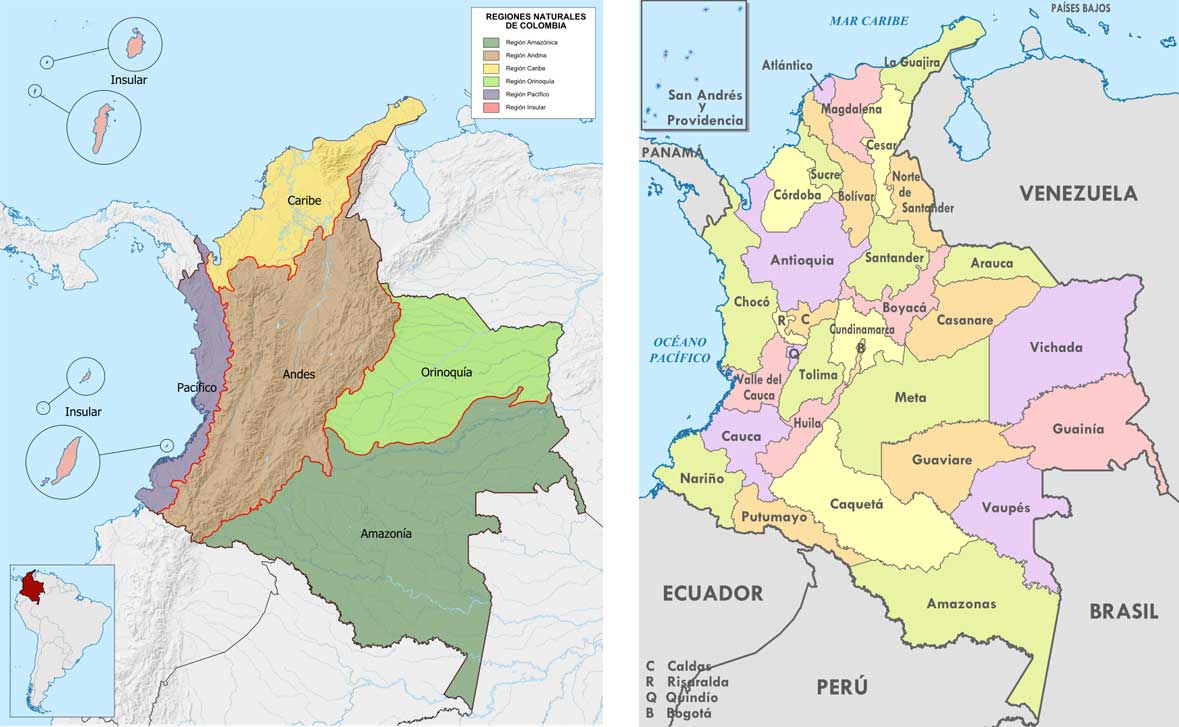
Left: Colombia Natural Regions Map. Right: Colombia Departments Map.
Which dialects are spoken in Colombia?
There is a discussion between linguists regarding this topic.
Some of them propose Colombian dialects should be grouped into four major regions; others propose they should be grouped into five, seven or even into eleven groups.
Let’s explore the 11 Colombian Spanish Dialects from the North to the South part:
Insular
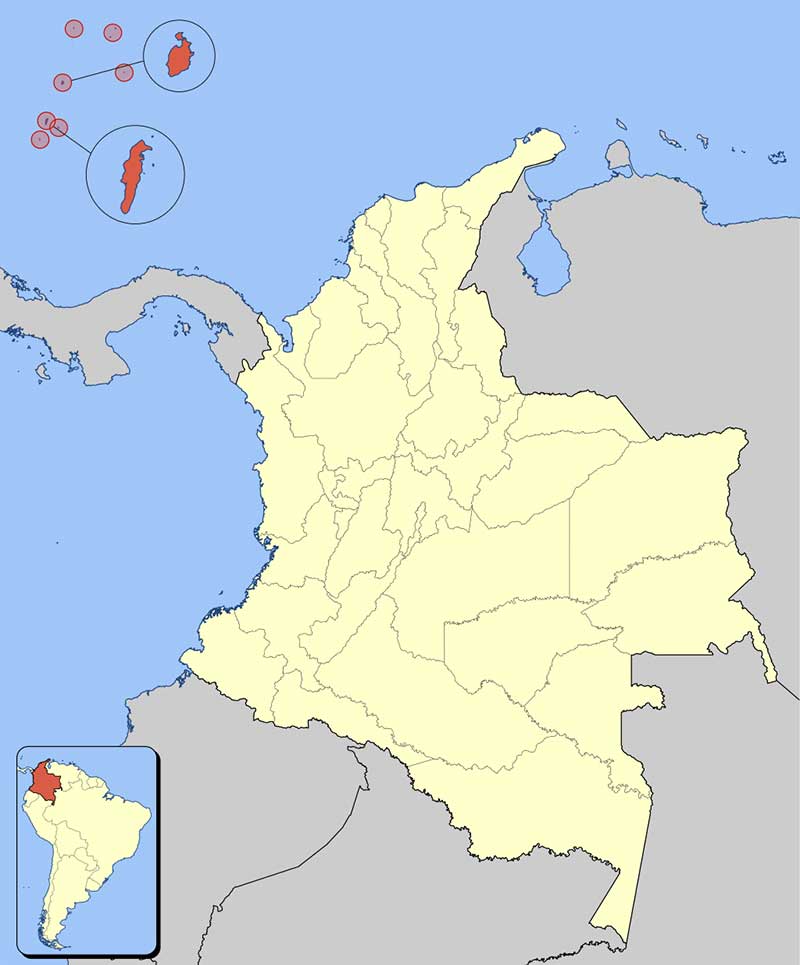
Colombia San Andrés and Providence Map.
The insular dialect is spoken in the Islands of San Andrés, Providencia, and Santa Catalina.
The dialect is known for being a mixture of Caribbean Spanish (Costeño) with some features of (British) English.
Thus, words such as “verso” (verse) becomes [ˈbeɹso]; “invierno” (winter) becomes [imˈbjeɹno]; and “escarlata” (scarlet) becomes [ehkaɹˈlata].
This dialect is closer to the Nicaraguan dialect because of the proximity of the islands to this country.
It’s important to note that besides Spanish, in the Insular region other languages are spoken. English, due to the proximity of English Speaking Caribbean islands and the influence of the British colonization. And a type of Creole, which is a blend between English, Spanish, Kwa (from the Ivory Coast, Ghana and Togo) and Igbo (from Nigeria).
Costeño
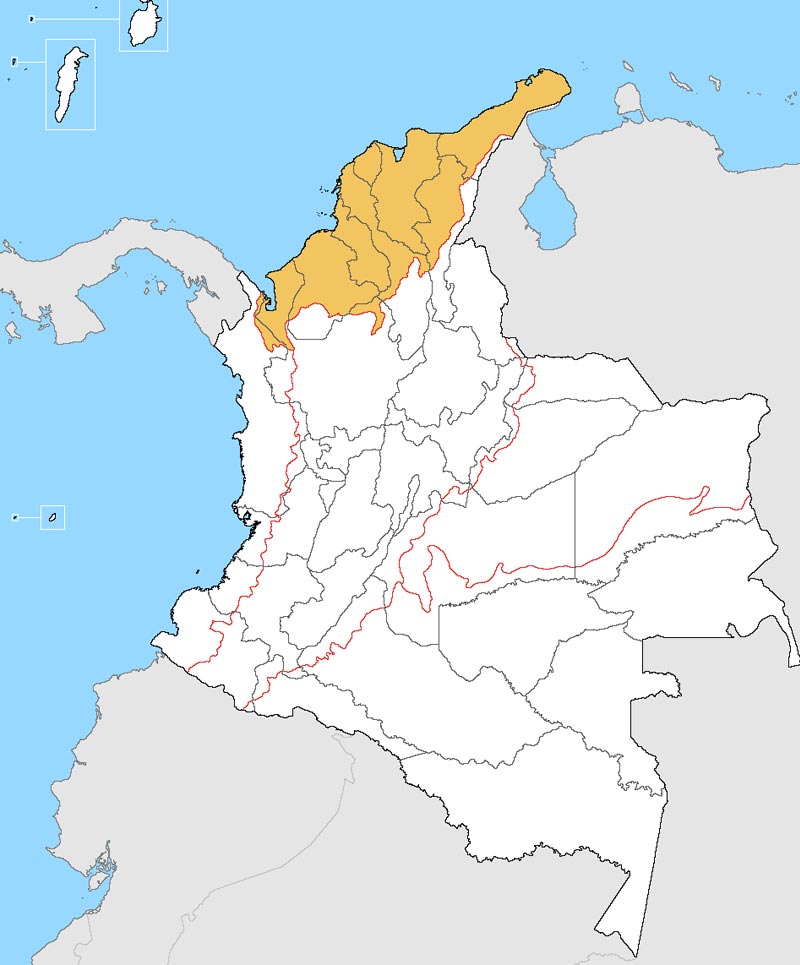
Colombia Caribbean Region Map.
The Costeño dialect is spoken in the Caribbean Region of Colombia.
Some of the most notable features of the costeño dialect are:
- Word-final /n/ is realized as velar [ŋ] (velar it is the sound of ng in English sing).
- One of the most defining characteristics of the region is the aspiration of the /s/ at the end of a syllable, which changes from an /s/ sound to a weak /h/. Thus, “costa” (coast) is pronounced [ˈkohta]; and “más o menos” (more or less) sounds more like “má[h] o meno[h]”
- The “d” in words that end in “-ado” is generally skipped. For instance, you’ll hear “pesca’o” instead of “pescado” (fish) and “pela’o” instead of “pelado” (slang for boy or guy).
- Some other letters may be omitted as well. For example, Cartagena would be pronounced “Ca’tagena” and “verdad” (truth) would be pronounced “ve’dá”.
Within the Costeño dialect, there are notable and distinguishable varieties of the dialect as well. The accents from Barranquilla, Cartagena, La Guajira and the interior coastal regions are all considered sub-dialects of the broader costeño classification.
Most of the people from outside the Caribbean region (including Colombians from the interior regions) might have a hard time picking them out.
For them, they all speak “costeño dialect” but for costeños people, the accent is pretty distinguished.
Santandereano
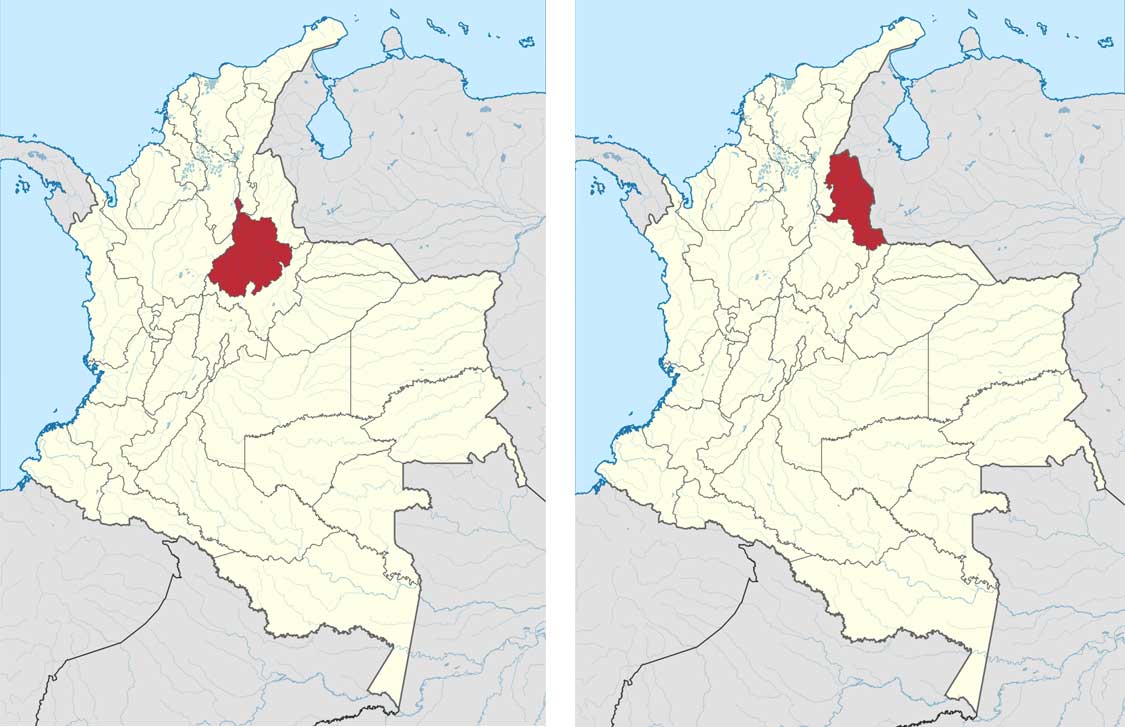
Left: Santander Department Right: Norte de Santander Department
Santandereano dialect is spoken in the northeastern part of the country in Santander and Norte de Santander Departments.
The most common feature of this dialect is the strong use of “ustedeo” in both informal and formal contexts.
In these regions you will rarely hear the pronoun “tú” (“you’ in its informal and singular form), as “usted” (“you” in its formal and singular form) dominates in almost all formal and informal situations.
For people from outside these regions, the use of “ustedeo” and their staccato speech makes the accent sound a little angry and rough.
Paisa
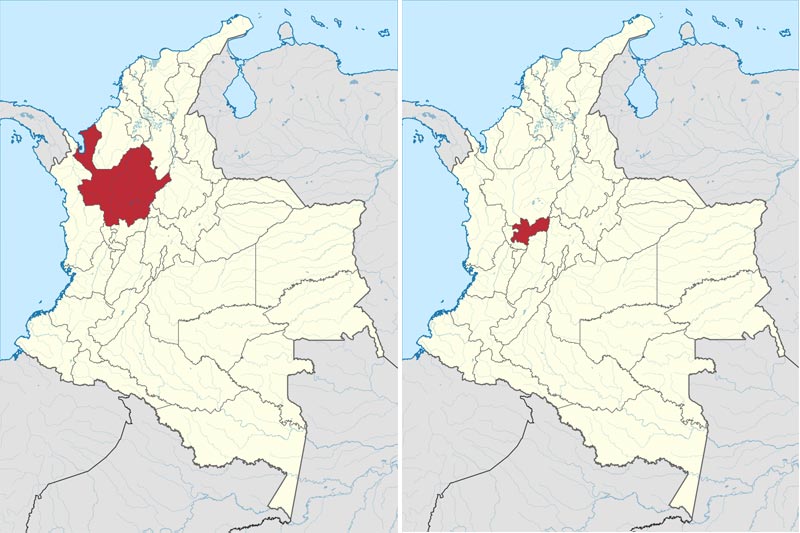
Left: Antioquia Department.
Right: Caldas Department
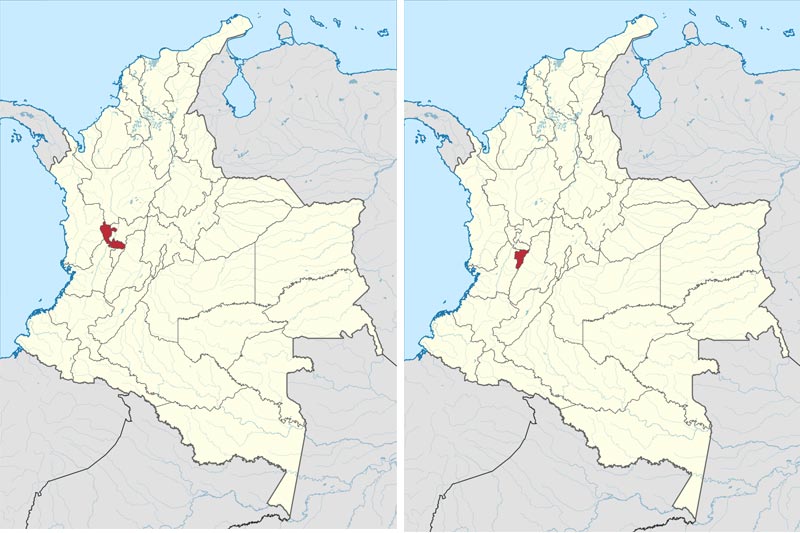
Left: Risarlada Department Right: Quindio Department
Paisa dialect is mainly spoken in the departments of Antioquia, Caldas, Risaralda and Quindío.
The way Paisas speak Spanish is distinctive both within and outside Colombia.
Paisas are said to speak Spanish fast and soft. They have many local and regional expressions that are opaque even for other Colombians.
Some of the most notable features of the paisa dialect are:
- Voseo (using “vos” instead of ‘tú”). Paisas use “vos” as the second person singular informal pronoun (instead of tú) and “usted” for formal address. You will (almost) never hear “tú” but it is common to hear “usted” even with relatives and friends. Thus, instead of “¿Qué quieres comer?”, you might ask “¿Qué querés comer?” (what do you want to eat?)
- One of its most distinctive features is the phrasal intonation. Some people call it a singsong accent that drags out the end of a sentence in a most peculiar tonal rise and fall.
- The /s/ is pronounced slightly more like an /sh/, giving the accent an almost whisper-like feeling.
Chocoano

Choco Department
The Chocoano dialect is spoken throughout the Pacific coast.
It is said to reflect African influence in terms of intonation and rhythm. Similar to the Costeño dialect, this dialect is known for omitting the syllable-final /s/ or debuccalize it and pronounce it as [h].
For example, you would hear “e’to señore” instead of “estos señores”.
This dialect is also spoken by Afro-Colombians living inland in the departments of Cauca and Valle del Cauca.
Cundiboyacense
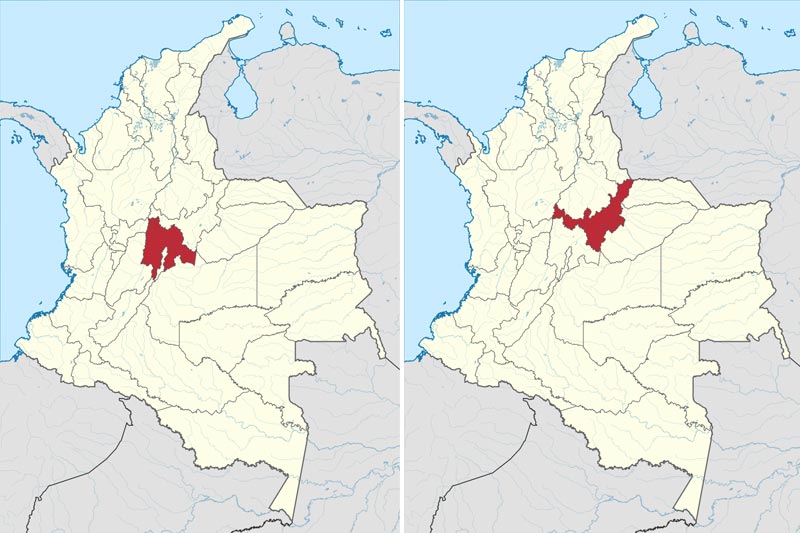
Left: Cundinamarca Department Right: Boyaca Department
The Cundiboyacense dialect is spoken in the departments of Cundinamarca and Boyacá, also known as “Altiplano Cundiboyacense” (Cundiboyacense High Plateau).
The main feature of this dialect is the use of the term “sumercé”, which is a shorter way of saying “su merced” (literally “your grace”).
This is an old term to treat someone with courtesy and respect back in the colonial times. After the Spanish Conquest, people used to say “vuestra merced”, now since in Colombia we don’t use “vosotros” this term has changed to “su merced”. (Read our post Top 5 differences between Spanish from Colombia and Spanish from Spain)
Although Bogota is located in the Cundinamarca department, the dialect spoken in the capital city is quite different and has its features.
Rolo
Rolo is the dialect spoken in Bogotá.
Some people also called it “cachaco”, however, there is a difference between Rolos and Cachacos.
Rolo dialect is known as being one of the easiest Spanish dialects to learn and to understand. Some of the most notable features of this dialect are:
- The use of the pronoun “usted” even among family members and close friends.
- Rolos are known for being very polite and its dialect proves it. In Bogota, you will normally hear people saying “Podría por favor abrir la ventana?”, which is similar to the polite British way of saying “would you please open the window?”
- The pronunciation of all letters, including syllable-final /s/ and /d/ in the -ado endings.
When people talk about “Colombian Spanish” they normally are referring to the Rolo dialect. It’s the most neutral dialect of the country and therefore it is used for formal speeches, National TV and radio.
Opita
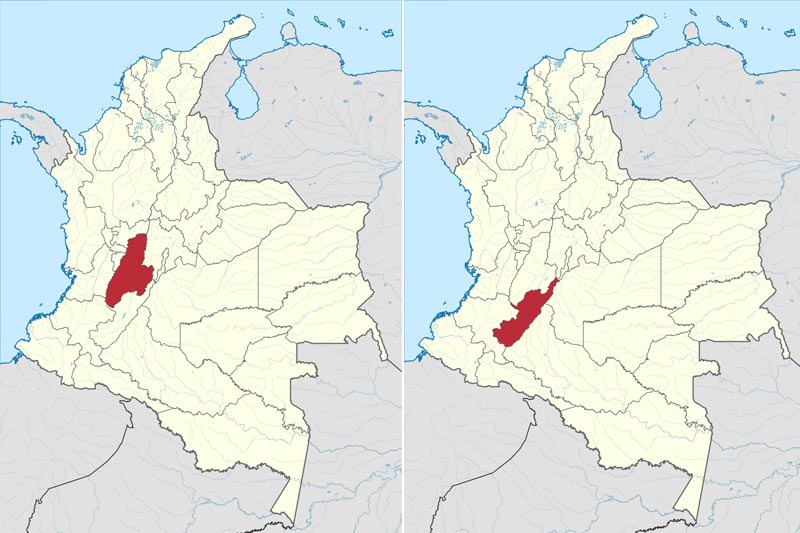
Left: Tolima Department Right: Huila Department
The Opita dialect is spoken in the departments of Tolima and Huila, mostly in the central and southern parts of the Magdalena River Valley.
This dialect is known for having a strong influence on indigenous languages and is noted for its slow tempo and unique intonation.
The dialect is also characterized by the use of the second-person pronoun “usted” with a variation of the word in some rural areas “vusted”
People from Tolima and Huila are known for speaking very slowly and for changing the common hiatuses to diphthongs. For instance, for the word “pelear” (to fight) you would hear “peliar” and for the word “peor” (worse) you would hear “pior”.
Llanero
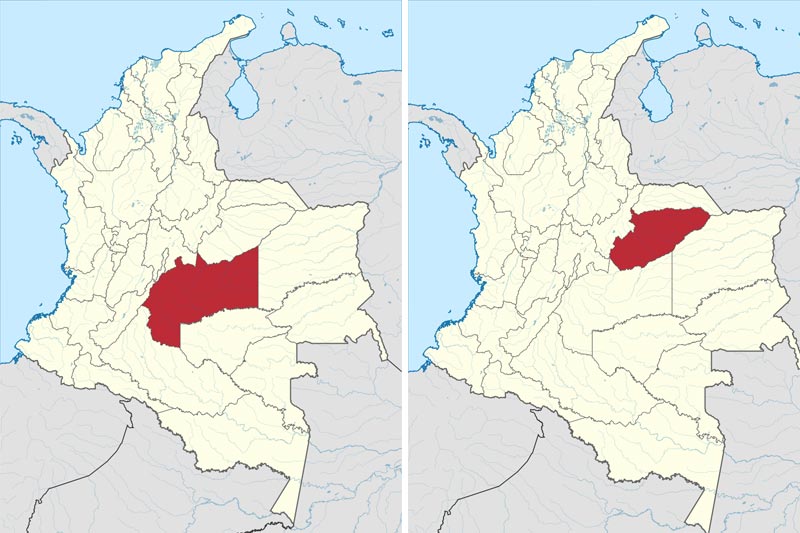
Left: Meta Department Right: Casanare Department
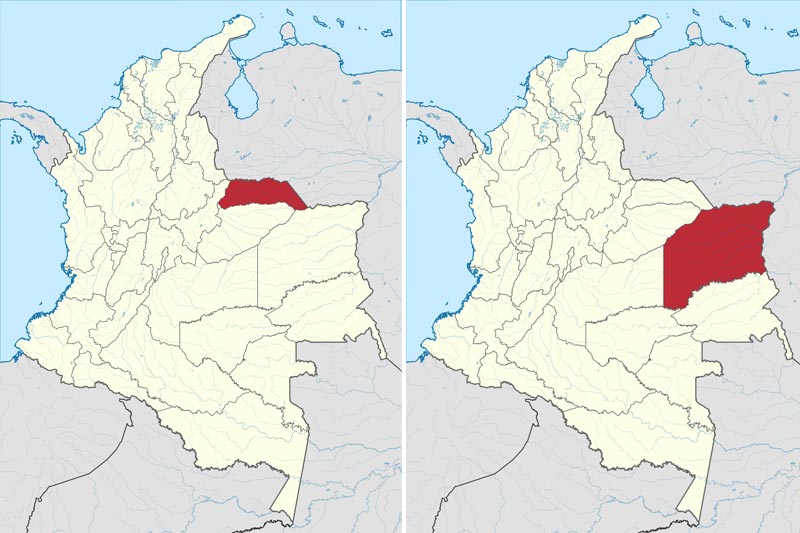
Left: Arauca Department Right: Vichada Department
Llanero dialect is spoken in the eastern plains of the country. It is spoken throughout the Colombian plains in the Meta, Casanare, Arauca and Vichada departments.
Some of the most notable features of this dialect are:
- Perhaps the most typical feature of this dialect is its Indigenous inheritance, there are many indigenous terms incorporated into this speech.
- It suppresses or weakens the redundant /-s/ of the plural, making it sound like a soft /h/. For example a sentence like “Los perros cuatronarices” would sound like “lo[h] perro cuatronarice) (cuatronarices is a local snake species), or for a sentence like “ los padrinos” (the godfathers) you would hear “lo[h] padrino”
- It also tends to make a composition of words. For instance “pativoltiao”, which is a combination of “pata” (leg) + “volteado” (flipped).
Caleño (Valluno)

The Valluno dialect is spoken in the valley of the Cauca River between the Western and Central cordilleras. It is also known as Caleño (from the city of Cali).
Some of the most notable features of this dialect are:
- Similar to the Paisa dialect, the Caleño dialect is known for the strong use of voseo.
This dialect has many slang and phrases not used in the rest of the country. - Another of the most notable features of this dialect is the strong use of “jejeo”. This is the change of an /s/ sound in between vowels to a /h/ sound. For instance, you would hear “nehesitár” instead of “necesitar” (to need), or “lohombres” instead of “los hombres”.
Also, the /n/ sound at the end of a sentence is often changed to an /m/ sound. For example “pan” (bread) becomes “pam” and “tren” (train) becomes “trem”.
Pastuso
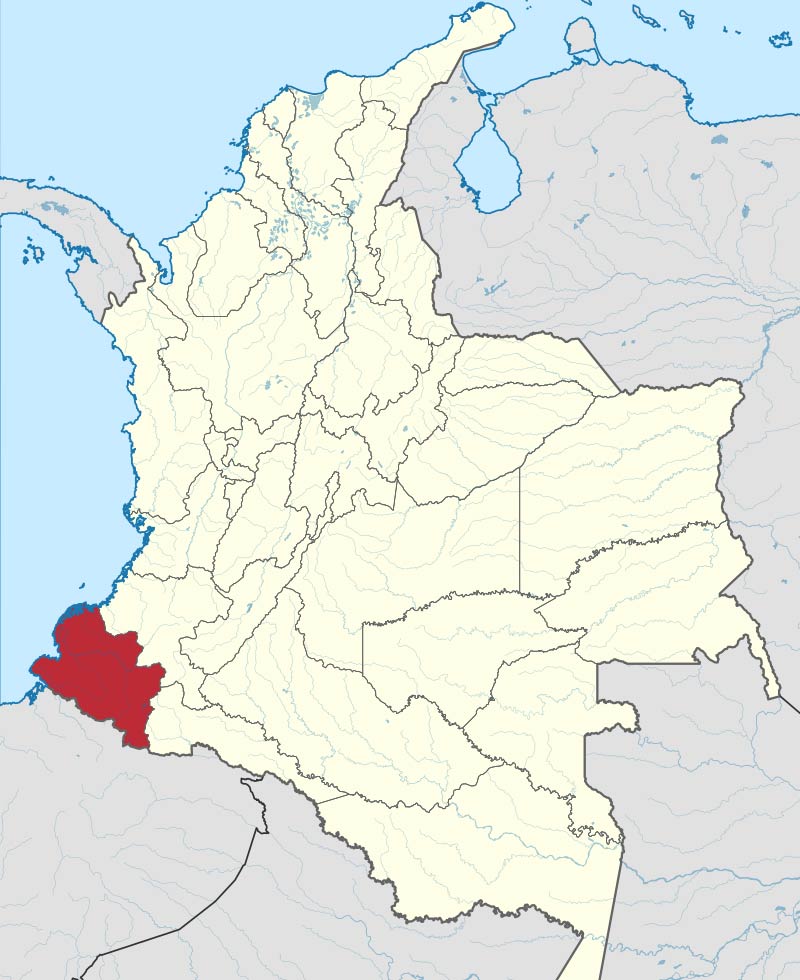
Nariño Department
Lastly, the Pastuso dialect is spoken in the southwest of the country in the Nariño department.
This dialect is closer to that spoken in Ecuador, Peru or Bolivia than to many of its Colombian counterparts.
Some of the most notable features of this dialect are:
- Pastuso dialect also has strong indigenous influence, with many common words adopted from Quechua language, for example: “achachay” for cold, “cuiche” for rainbow and “guato” for small.
- The /r/, like in Chile, is assibilated. It means that the sound is more like a hissing sound.
- Vowels are also weakened to give more emphasis to the consonants, and like in the interior, the /s/ is never omitted or weakened.
In conclusion
As you can see, there is a huge world within the Colombian language and its dialects. There are some easier to understand than others.
So, don’t worry! Don’t get frustrated if you go to a different region or country and you are having issues to understand certain words or expressions. If it’s any consolation, even for us, native Spanish speakers, some dialects are more difficult to understand.
Just keep practicing and most importantly don’t be afraid to ask if you don’t understand the meaning of a word or expression. Colombian people are very friendly and they will be happy to explain to you and teach you new words.
Last but not least, don’t miss our next blog post. We know is difficult to get a proper idea of the accent by just reading the characteristics so we have prepared some audios that will help you to identify the features of each dialect here mentioned.
File Attributions and References:
- Natural Regions of Colombia By Milenioscuro – Trabajo propio CC BY-SA 4.0
- Departments of Colombia By Milenioscuro – Trabajo propio, CC BY-SA 4.0
- Colombia San Andres y Providencia Map By Milenioscuro / CC BY-SA
- Colombia Caribbean Region Map By Milenioscuro / CC BY-SA
- Santander Department Map By TUBS – Own work, CC BY-SA 3.0
- Norte de Santander Department Map By TUBS – Own work, CC BY-SA 3.0
- Antioquia Department Map By TUBS – Own work, CC BY-SA 3.0
- Caldas Department Map By TUBS – Own work, CC BY-SA 3.0
- Risaralda Department Map By TUBS – Own work, CC BY-SA 3.0
- Risaralda Department Map By TUBS – Own work, CC BY-SA 3.0, https://commons.wikimedia.org/w/index.php?curid=17366776
- Quindio Department Map By TUBS – Own work, CC BY-SA 3.0, https://commons.wikimedia.org/w/index.php?curid=17366776
- Choco Department Map By TUBS – Own work, CC BY-SA 3.0, https://commons.wikimedia.org/w/index.php?curid=17366568
- Cundinamarca Department Map By TUBS – Own work, CC BY-SA 3.0, https://commons.wikimedia.org/w/index.php?curid=17366612
- Boyaca Department Map By TUBS – Own work, CC BY-SA 3.0, https://commons.wikimedia.org/w/index.php?curid=17366393
- Tolima Department Map By TUBS – Own work, CC BY-SA 3.0, https://commons.wikimedia.org/w/index.php?curid=17366873
- Huila Department Map By TUBS – Own work, CC BY-SA 3.0, https://commons.wikimedia.org/w/index.php?curid=17366662
- Meta Department By TUBS – Own work, CC BY-SA 3.0, https://commons.wikimedia.org/w/index.php?curid=17366718
- Casanare Department By TUBS / CC BY-SA (https://creativecommons.org/licenses/by-sa/3.0)
- Arauca Department Map By TUBS / CC BY-SA (https://creativecommons.org/licenses/by-sa/3.0)
- Vichada Department Map By TUBS – Own work, CC BY-SA 3.0, https://commons.wikimedia.org/w/index.php?curid=17366912
- Valle del Cauca Department Map By TUBS – Own work, CC BY-SA 3.0, https://commons.wikimedia.org/w/index.php?curid=17366891
- Pasto Department Map By TUBS – Own work, CC BY-SA 3.0, https://commons.wikimedia.org/w/index.php?curid=17366727











